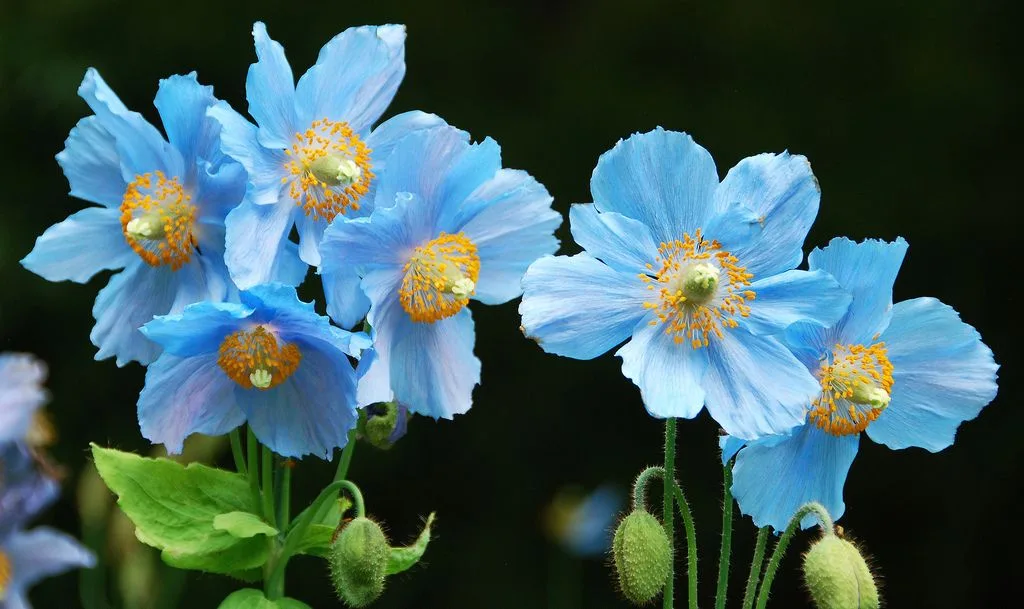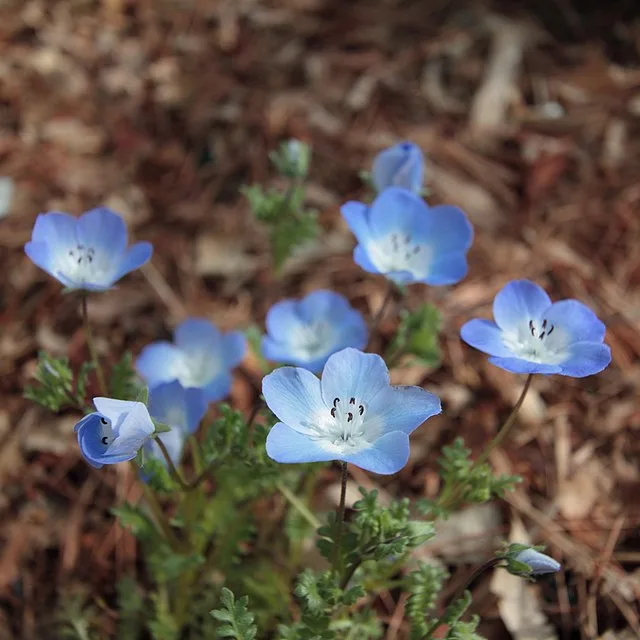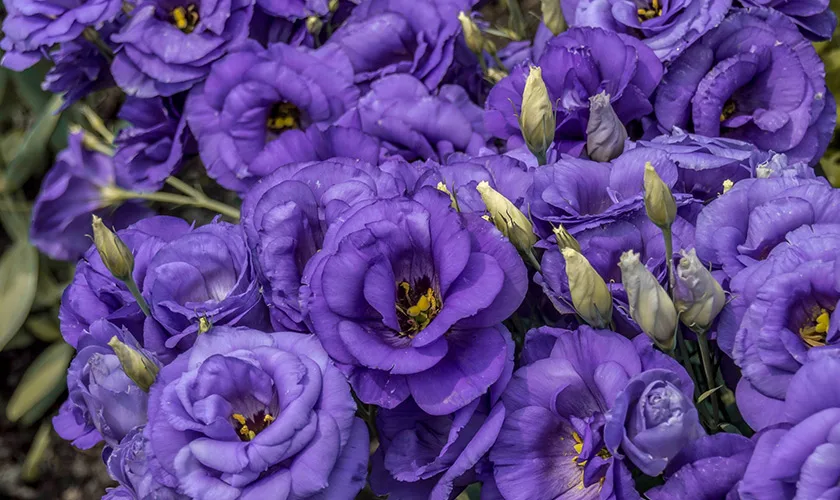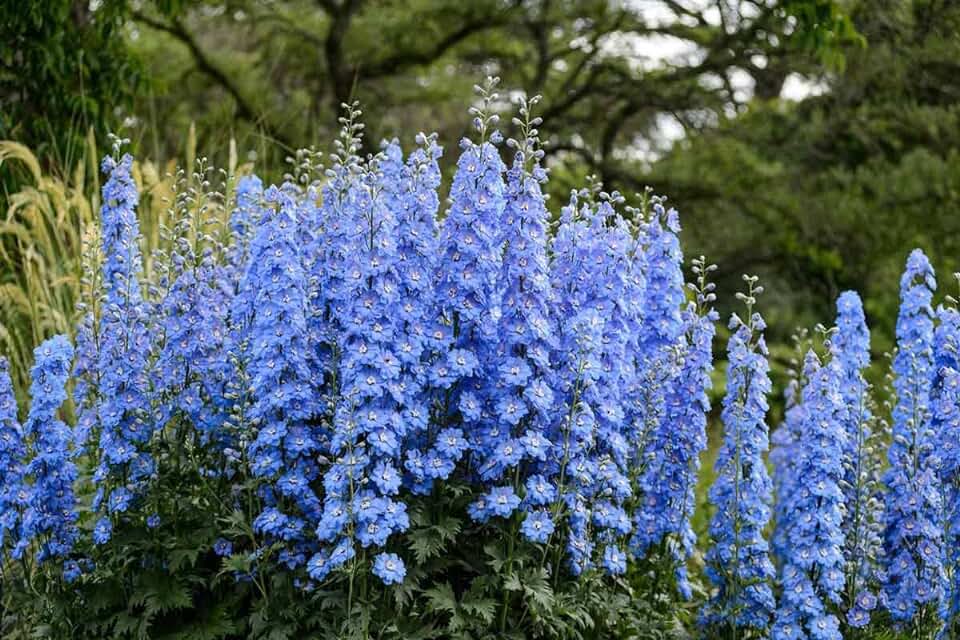Index
Introduction Blue Flowers
Nothing is more captivating than the rare and mysterious beauty of blue flowers. While nature presents us with a profusion of vibrant colors, blue flowers stand out like true jewels. Their rarity makes them even more desirable, capturing the imagination of gardeners and nature lovers the world over. In this blog, we’ll explore five stunning blue flowers that enchant and inspire. Get ready to marvel at the magic of blue in nature!
1. Himalayan Blue: Himalayan Blue Poppy (Meconopsis betonicifolia)
Description: Originally from the majestic Himalayan mountains, the Himalayan Blue Poppy is one of nature’s most iconic blue flowers. Its deep, intense blue petals evoke the tranquillity of alpine landscapes.

Origin and Habitat: These stunning flowers are found at high altitudes, where the air is fresh and the conditions are harsh. Their adaptation to the cold and humid climate of the Himalayan mountains is remarkable.
Cultivationand Care: To grow the Himalayan Blue Poppy in cold climates, it is essential to provide it with soil that is rich in organic matter and well-drained. It is also important to protect it from strong sunlight by providing partial shade during the hottest hours of the day. Regular watering, without soaking the soil, is essential for its healthy development.
2. Ocean Blue: Agapanthus (Agapanthus spp.)
Blue varieties: Agapanthus is a plant known for its trumpet-shaped flowers and is available in several varieties with blue flowers. These flowers, which can vary from light to deep blue, are a stunning addition to any garden.

Planting and cultivation: Agapanthus is a hardy plant that thrives in full sun to partial shade. It prefers well-drained soil and tolerates short periods of drought, making it an ideal choice for gardens and pots. Plant them in groups to create visual impact or use them as a focal point in your garden.
Care and Maintenance: This plant requires little care other than regular watering during periods of active growth. Remove faded flowers to promote continuous blooms and apply a balanced fertilizer in spring to stimulate healthy growth. With proper care, the Agapanthus will reward you with its beautiful blue flowers season after season.
3. Sky Blue: Nemophila (Nemophila menziesii)
Presentation: Nemophila, also known as “Baby Blue Eyes”, is a charming annual flower that stands out for its heavenly blue hue and delicate appearance. Originally from the western United States, thisflower is a charming addition to any garden or floral arrangement.

Popular Name: Its affectionate nickname, “Baby Blue Eyes”, derives from the soft hue and shape of the petals, which resemble a baby’s eyes. This association makes Nemophila even more adorable and endearing.
Cultivation and benefits: Nemophila is an easy-to-grow annual flower, ideal for gardeners of all levels of experience. It thrives in well-drained soil and in places with partial shade, which makes it perfect for flower beds or pots. In addition to its aesthetic beauty, Nemophila attracts beneficial pollinators such as bees and butterflies, contributing to the biodiversity of your garden.
4. Elegant Blue: Lisianthus (Eustoma grandiflorum)
Blue Lisianthus varieties: The Lisianthus is a flower known for its elegance and variety of colors, including shades of blue that are truly stunning. There are several varieties of Lisianthus with blue flowers, from lighter shades to deep, vibrant blues. This diversity offers a wide range of options for those wishing to add a touch of blue elegance to their garden or floral arrangement.

Planting and Maintenance: Lisianthus is a relatively easy plant to grow, but it does require some specific care to ensure its healthy and long-lasting growth. It prefers full sun or partial shade and well-drained soil. It is important to avoid waterlogging the soil, as this can lead to root rot. Water regularly, but sparingly, and fertilize the plant during the growing season to promote lush flowering. Remove wilted flowers to encourage new flower buds and extend the flowering season. With proper care, the Lisianthus will continue to delight with its elegant blue flowers for many weeks to come.
5. Sky Blue: Delphinium (Delphinium spp.)
Majestic description: The Delphinium, also known as Espuela de Caballero, is a flower that evokes the grandeur of the blue sky in its imposing appearance. Its tall, elegant stems rise up like flowering towers, adorned with a profusion of blue flowers reminiscent of the sun’s rays shining on the horizon.

Cultivationand Maintenance: Growing Delphinium requires a little more care than other flowers, but the results are worth the effort. These majestic flowers prefer full sun and soil that is rich in organic matter, well-drained and slightly alkaline. Make sure you provide adequate support for their tall stems, as they can be prone to tipping over under the weight of the flowers. Keep the soil moist, but not soggy, and remove faded flowers to promote continuous flowering. With proper care, the Delphinium will beautify your garden with its magnificent presence and its blue flowers that seem to touch the sky itself.
Conclusion
In this blog, we’ve explored the beauty and allure of blue flowers, highlighting five stunning species that enchant the hearts of gardening and nature lovers. From the sky blue of the Nemophila to the majestic presence of the Delphinium, each flower offers its own unique essence, enriching our gardens and our lives.
Flowers featured:
- Himalayan Blue: Himalayan Blue Poppy(Meconopsis betonicifolia)
- Ocean Blue: Agapanthus(Agapanthus spp.)
- Sky Blue: Nemophila (Nemophila menziesii)
- Elegant Blue: Lisianthus(Eustoma grandiflorum)
- Sky Blue: Delphinium(Delphinium spp.)
Don’t limit yourself to this knowledge! Explore more about flowers, plants and gardening on our website, Super Universe of Plants. Let yourself be inspired by the diversity and beauty of nature as you dive into the wonderful world of plants. Join us on this verdant journey and discover the pleasure of cultivating a garden full of color and life.
Frequently Asked Questions
What is the meaning of the blue flower?
The blue flower is often associated with serenity, calm and tranquillity. Its unique and delicate color evokes a sense of peace and harmony, conveying a message of trust and stability. It is seen as a symbol of hope and renewal, also representing the search for truth and knowledge.
What is the name of a blue flower?
An example of a blue flower is the Agapanthus, also known as the nile lily. This perennial plant has blue trumpet-shaped flowers that add exuberant beauty to gardens and landscapes. The Agapanthus is appreciated not only for its dazzling color, but also for its resistance and ease of care.
What are the blue flowers?
Blue flowers are diverse and found in various plant species around the world. Some of the best-known blue flowers include the Nemophila (known as “Baby Blue Eyes”), the Lisianthus, the Delphinium, the Meconopsis betonicifolia (Himalayan Blue Poppy) and the Agapanthus. Each of these flowers has its own unique beauty and special characteristics, contributing to the diversity and charm of gardens and landscapes.







